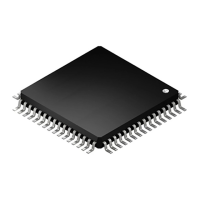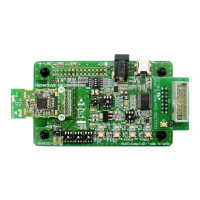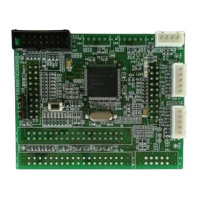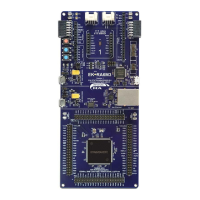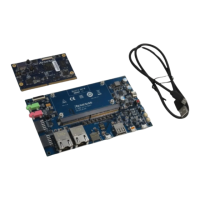RL78/F13, F14 CHAPTER 4 PORT FUNCTIONS
R01UH0368EJ0210 Rev.2.10 256
Dec 10, 2015
4.2.7 Port 7
Port 7 is an I/O port with an output latch. Port 7 can be set to the input mode or output mode in 1-bit units using port
mode register 7 (PM7). When used as an input port, use of an on-chip pull-up resistor can be specified in 1-bit units by
pull-up resistor option register 7 (PU7).
Input to the P70, P71, and P73 pins can be specified through a normal input buffer or a TTL input buffer in 1-bit units
using port input mode register 7 (PIM7). For the P70, P71, P73, and P75 to P77 pin input, the threshold of the input buffer
can be specified in 1-bit units using the port input threshold control register 7 (PITHL7). Output from the P70 to P72 pins
can be specified as N-ch open-drain output (EV
DD tolerance) in 1-bit units using port output mode register 7 (POM7). To
use P70 to P74 as input pins, set them in the digital mode or analog mode in 1-bit units by using the port mode control
register 7 (PMC7).
This port can also be used for A/D converter analog input, key interrupt input, data I/O for serial interfaces, clock I/O,
slave select input, timer I/O, external interrupt request input, SNOOZE status output, and serial data I/O for CAN.
To use P70/ANI26 to P74/ANI30 as digital input pins, set them in the digital I/O mode by using the port mode control
register 7 (PMC7) and in the input mode by using the PM7 register. Use these pins starting from the upper bit.
To use P70/ANI26 to P74/ANI30 as digital output pins, set them in the digital I/O mode by using the port mode control
register 7 (PMC7) and in the output mode by using the PM7 register.
To use P70/ANI26 to P74/ANI30 as analog input pins, set them in the analog input mode by using the port mode
control register 7 (PMC7) and in the input mode by using the PM7 register. Use these pins starting from the lower bit.
Reset signal generation sets P70 to P74 to analog input mode and P75 to P77 to input mode.
<R>

